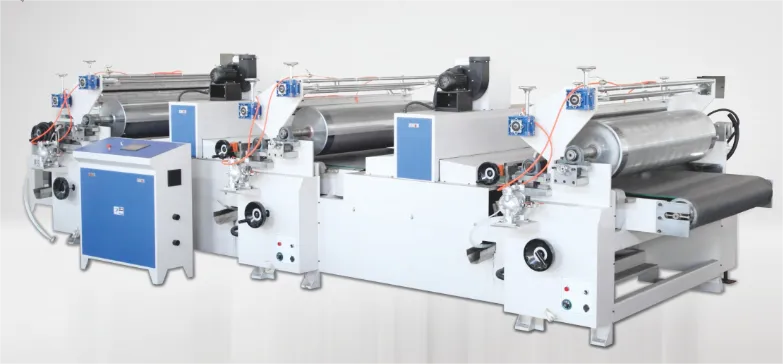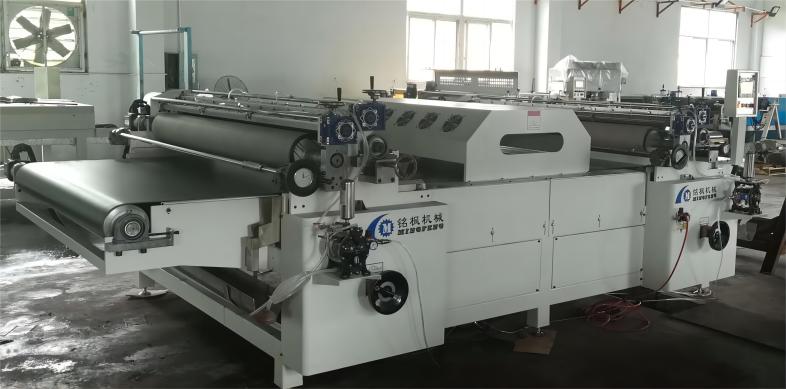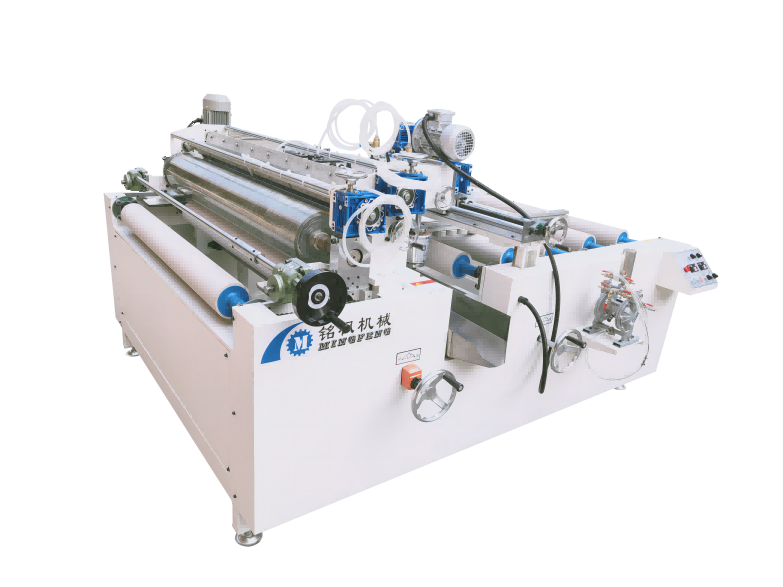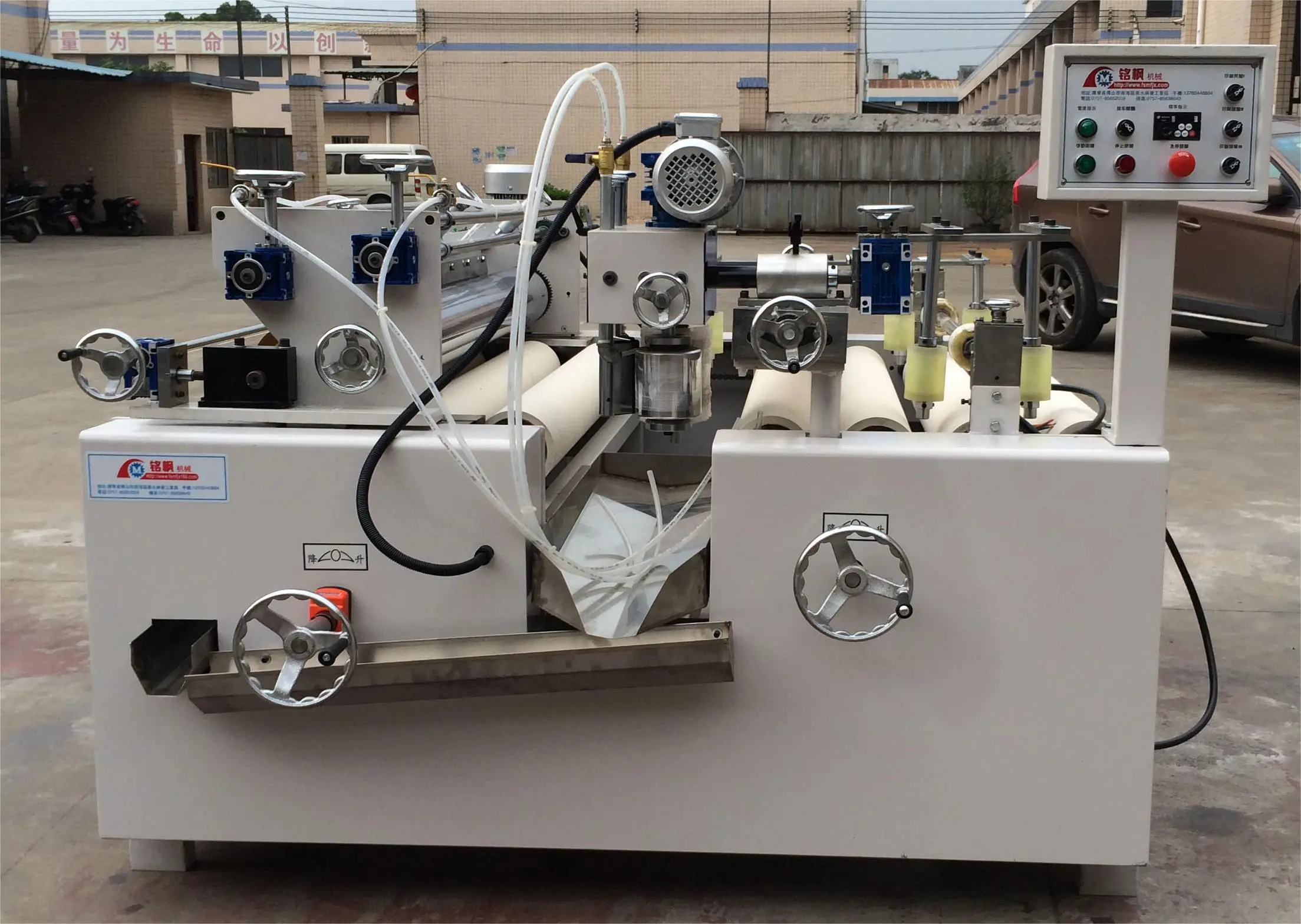In the furniture manufacturing industry, there are many ways to achieve a "wood grain appearance": veneer, heat transfer printing, water transfer printing, digital direct-to-garment printing, gravure direct-to-garment printing, roller coating, etc. However, if we focus on specialized equipment that can stably, repeatedly, and controllably apply wood grain patterns to substrates on a production line—the furniture wood grain printing machine—we must answer a fundamental and crucial question: Which materials are best for it?
A rigorous answer is needed, not just listing material names, but also explaining why it is suitable, what pretreatment is required, which printing/curing principles it matches, and what the process window requirements are.
This article will build an engineering-based "material-process-equipment" adaptation framework around these core dimensions to help readers make informed decisions when selecting materials and setting up production lines.

What is a "Furniture Wood Grain Printing Machine"?
In a broad sense, furniture wood grain printing machines refer to complete sets of equipment capable of stably and repeatedly transferring/printing wood grain patterns onto the surface of furniture substrates. Common types include:
1. Gravure Roller Wood Grain Printing Machine
This machine uses a gravure roller with engraved cells and a doctor blade to control ink, directly transferring the wood grain pattern to the surface of boards, rolls, or moldings. It can perform single-color/two-color/multi-color overprinting, offering high efficiency and good batch consistency.
2. Digital UV Inkjet Wood Grain Printing Machine
This machine uses an inkjet array to print droplets on demand, supplemented by UV-LED/mercury lamp curing. It eliminates the need for plate making, allows for flexible pattern switching, and is suitable for a wide variety of products.
3. Thermal Transfer Printing (Water Transfer Printing as a 3D Special Case)
This machine uses heat/water as a medium to transfer the pre-printed wood grain from a carrier film to the substrate surface, making it more suitable for specific objects such as irregularly shaped or metal profiles.
Regardless of the underlying principle, furniture wood grain printing machines typically include: feeding/positioning, pattern imaging and inking units, registration systems, drying/curing modules (such as UV), rewinding/unloading, and online inspection. Determining whether a material is suitable essentially involves assessing whether it can establish a stable process window in five aspects: wetting, adhesion, registration, curing, and long-term durability.
XMF, a furniture wood grain printing machine manufacturer, states that some two-color wood grain printing machine product pages directly indicate applicable materials such as "3D printing of wood grain/stone grain on various boards, sheets, and rolls," and provide typical widths, thicknesses, speeds, and servo control parameters. These conditions also determine the boundaries of processable materials.

How to determine if a furniture wood grain printing machine is suitable for a material?
— Five technical indicators.
Before identifying which materials a furniture wood grain printing machine is suitable for, establish general criteria:
1. Surface Energy and Wettability
For the ink/paint layer to spread well and achieve a sufficient contact angle, the substrate surface energy needs to be above a certain threshold (often measured in dynes). 1. **Wood-based boards are generally easily wetted; while some plastics (PP/PE) have low surface energy, requiring corona/flame/plasma treatment or a primer.**
2. Thermal Stability and Curing Compatibility
If using a UV system, the substrate must withstand photothermal loads; if using hot air/IR or heat transfer printing, the substrate must withstand the corresponding temperature and time. PVC, ABS, and MDF are compatible within a reasonable range; materials with low softening points require caution.
3. Absorption and Porosity
Porous materials such as MDF/HDF and particleboard absorb inks/coatings, making pre-coating sealing and priming crucial to prevent ink absorption, which can lead to color differences and pore surface defects.
4. Dimensional Stability and Flatness
Printing requires stable substrate transport and registration. Warped, high-stress, or high-moisture-content boards can cause color misregistration, blurred prints, or later cracking.
5. Mechanical and Chemical Resistance
Furniture surfaces must withstand scrubbing, friction, and cleaning with common chemicals. The compatibility of the substrate and surface layer (e.g., UV varnish topcoat) determines long-term durability.

"Board Material Family": Is it compatible with furniture wood grain printing machines?
MDF/HDF, particleboard, plywood, and wood veneer panels.
1. MDF/HDF (Medium-Density/High-Density Fiberboard)
• Compatibility Conclusion: Highly compatible with furniture wood grain printing machines.
• Reasons: Fine surface, uniform pores, good dimensional stability, easy to obtain a smooth printing interface; good ability to withstand the heat load of UV curing.
Process Points:
• Pretreatment: Fine sanding (e.g., P240→P320), dust removal, sealing primer;
• Coloring: Gravure direct printing or digital UV direct printing are both possible;
• Curing: UV varnish topcoat allows for rapid film formation, improving abrasion and chemical resistance.
• Note: Control the moisture content of the board (e.g., 6–10%) to avoid coating failure due to dimensional changes later.
2. Particleboard (PB)
• Compatibility Conclusion: Good compatibility, but more sensitive to sealing and leveling.
• Processing Points: Roughness and pores need to be leveled with primer and multiple thin coats; ensure the surface is dense before printing to avoid uneven absorption causing pattern distortion and loss of gloss.
3. Plywood
• Compatibility Conclusion: Good compatibility; wood grain overprinting can present rich layers.
• Processing Points: Micro-texture and glue seam marks on the board surface need to be treated; achieve smoothness through putty/primer and sanding before gravure/inkjet printing.
4. Veneer on MDF/PB
• Compatibility Conclusion: Suitable for conditions; suitable for light printing with "texture enhancement or custom hues".
• Processing Points: Wood veneer has significant absorption and color variation; thin printing followed by a clear coat is recommended. Excessively thick ink layers or strong coloring may obscure the natural texture of the wood veneer.
For panel materials, such as two-color wood grain printers, effective processing dimensions (e.g., effective width approximately 1,320 mm, thickness 2–80 mm, minimum workpiece length approximately 300 mm) and conveyor speed (e.g., 0–20 m/min) are provided. These physical windows directly define the panel specifications that can be fed into the line.
Roll/Strip Materials: Are they compatible with furniture wood grain printing machines?
PVC edge banding, decorative film, sheet materials.
1. PVC Edge Banding (Roll to Roll)
• Compatibility Conclusion: Highly compatible with roll gravure lines in furniture wood grain printing machines.
• Reasons: After corona/priming treatment, ink wetting and adhesion are stable; 3–4 color gravure overprinting can achieve realistic wood grain layers; inline UV varnish curing provides a wear-resistant surface.
• Key Process Points: Closed-loop tension control, electronic axis or visual registration, and integrated drying/UV curing ensure consistent color difference and registration accuracy during long-term continuous operation.
2. PVC Sheets/Rolls
• Compatibility Conclusion: Good compatibility, suitable for wood grain printing on decorative substrates such as wall panels and door panel coverings.
• Key Process Points: Corona/priming enhances surface energy; if using digital UV inkjet printing, combined with white ink priming and UV clearing, pattern saturation and scrub resistance are even better.
3. Other Thermoplastic Rolls (ABS/ASA, PS, PETG, etc.)
• Compatibility Conclusion: Suitable for various conditions; the choice of primer and UV/hot air drying depends on the material polarity and heat resistance.
• Note: PETG, PMMA, etc., are solvent-sensitive; low-swelling inks and UV curing routes are recommended. Adhesion of ASA/ABS can be improved through primer or corona treatment.
Plastic and Composite Boards/Profiles: Are They Compatible with Furniture Wood Grain Printing Machines?
PVC, ABS/ASA, WPC, and Low Surface Energy Plastics.
1. PVC Hollow Boards, Solid Boards, and Moldings
• Compatibility Conclusion: Highly compatible.
• Reasons: Relatively high polarity; surface energy reaches the printing window through corona/priming; heat resistance is also more favorable for common UV-LED curing.
• Process Points: Moldings and profiles can use multi-sided printing structures (multi-array printheads or multi-roller combinations) to complete wood grain registration on multiple facades in one pass.
2. ABS/ASA, PS, PMMA, etc.
• Compatibility Conclusion: Good compatibility, but attention should be paid to solvent and heat effects.
• Process Points: Select ink system for small-scale testing; use white ink base and UV clear coat if necessary to improve coverage and weather resistance.
3. WPC (Wood-Plastic Composite)
• Compatibility Conclusion: Suitable under certain conditions.
• Reasons: Wetting fluctuations and exudates may exist on the material surface;
• Process points: Flame/plasma activation + primer, control surface tension stability before gravure or digital direct printing.
4. Low surface energy plastics such as PP/PE
• Compatibility conclusion: Not preferred.
• Problems: Low dyne value, adhesion and durability are difficult to control;
• Improvements: Strong corona/plasma + special primer can barely pass the test, but production consistency and long-term durability need careful evaluation.
Metal substrates and furniture hardware: Are they suitable for furniture wood grain printing machines?
Wood grain appearance of aluminum profiles and steel plates.
1. Aluminum profiles (door frames, decorative strips, baseboards, etc.)
• Compatibility conclusion: Thermal transfer is more suitable, and partial direct printing can also be done on powder base color.
• Reasons: The process of powder coating base color → covering wood grain transfer paper → thermal sublimation/transfer printing is mature, durable, and has high appearance consistency.
• Supplement: To achieve a seamless finish with furniture wood grain printing machines, pre-printed film/roll stock can be used, or digital UV partial patterns can be overlaid on the base color, followed by clear varnishing and curing.
2. Galvanized Steel Sheet/Cold-Rolled Sheet (Furniture Metal Parts, Panels)
• Compatibility Conclusion: Suitable for the conditions.
• Process Points: After phosphating/powder coating, heat transfer printing or digital UV direct printing + clear varnishing can be performed; adhesion directly on bare metal is poor and not recommended.

Glass, Stone, and Special Substrates: Are they suitable for furniture wood grain printing machines?
Yes, but requires a "systematic" approach.
• Glass: Wood grain decoration can be done (e.g., cabinet door glass, partitions). A sandwich structure of white base + color printing + UV clear varnish can achieve good saturation and coverage, but the difference between the back/front printing and cleaning resistance requirements must be considered.
• Artificial stone/sintered stone: The substrate is dense with significant polarity differences, requiring a specialized primer and flexible varnish system; more often used for "stone grain" than "wood grain."
• Fiber cement board: Can be printed with wood grain decorative panels, but its high alkalinity and porosity make the initial primer and sealing process extremely critical.
Furniture wood grain printing machine: Which materials are best suited for it?
1. Best materials for furniture wood grain printing machines ("high compatibility, high stability" priority): MDF/HDF sheets, PVC edge banding strips/rolls and sheets.
2. Good compatibility: Particleboard, plywood, ABS/ASA/PS/PMMA strips and moldings.
3. Conditionally compatible: WPC wood-plastic composite (requires activation + primer), metal profiles and steel plates (better suited for heat transfer or powder coating before printing).
4. Not preferred: Low surface energy plastics such as PP/PE, unless strongly activated and equipped with a specialized primer and proven durability.
Achieving "adaptability → stability" relies on a systematic combination of pretreatment (sealing/corona/priming), printing (gravure or digital), clearing, and curing (UV/thermal), as well as precise control of the furniture wood grain printing machine's parameters (width, thickness, speed, servo registration, UV curing).
What makes XMF Machinery different from other suppliers?
XMF Machinery stands out as both a factory and a brand that combines innovation, high quality, and affordable prices. Unlike many trading companies, we are a direct manufacturer offering wholesale supply, factory promotions, and reliable quotes. Buyers can purchase customized coating machines, benefit from low purchasing prices, and receive ongoing technical support. Choosing XMF Machinery means buying from a professional supplier with strong manufacturing capabilities.
